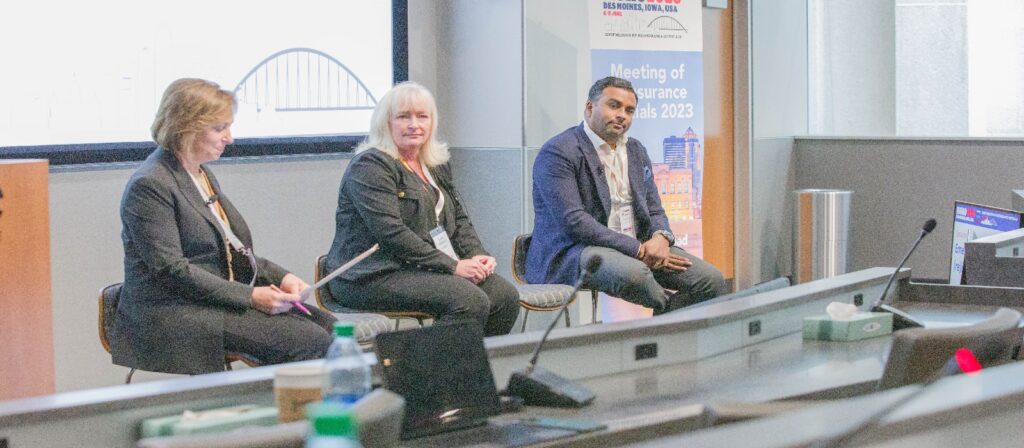The violent events of January 6, 2021, at the US Capitol are part of a troubling trend of election-related unrest. Similar incidents worldwide, such as the murder of an opposition candidate's brother in Turkey and violent election rallies in Bangladesh, highlight the increasing severity of election-linked violence. Social media and disinformation exacerbate these tensions, fueling radicalisation and potentially deadly attacks. With numerous elections worldwide, emotionally charged issues and the accessibility of weapons, particularly in countries like the US, further heighten the risks. Businesses must proactively manage these threats to protect their employees and stakeholders, emphasising preparedness and effective crisis management.
Fighting with police, metal barriers launched by angry crowds, officers throwing tear gas grenades into protestors – these are all memories of the unrest in Washington during the 6th January 2021 Capitol Hill riots. The ugly scenes of the mob attack were beamed across the world, painting a picture of increasing animosity and bitterness following the US presidential election of Joe Biden the previous year.
While it would be easy to disregard these events as a one-off attack from the far right, these images of violence and bloodshed are just some of the most high profile of a trend that has become increasingly commonplace in the lead-up and aftermath of elections.
It is an awful reality that national moments like elections can become flashpoints for harm and violence. In an era where voters are more polarised than ever and social media and disinformation can fuel potential radicalisation against scapegoated communities, the risk of a deadly weapon attack is heightened.
The election flashpoint
In southeastern Turkey, the brother of an opposition candidate was murdered and four were injured after clashes following a local mayoral election this year¹. In Bangladesh, a mass election rally in the lead up to the General Election in January 2024 became violent, leading to deaths, arrests, and rioting across the capital Dhaka².
Incidents like these reflect a growing anger and bitterness among sections of the electorate, and further highlight how protests can easily escalate into bloodshed. Not only is election-linked deadly violence becoming more commonplace, but incidents are becoming more severe³.
In this bumper election year, with 83 national elections in 78 countries, many election campaigns will be fought on emotionally charged issues such as national security and immigration which can divide communities, increase tension, and accelerate the risk of armed attacks by lone wolf assailants. In the US, the debate around abortion laws at both a federal and state level is expected to be a major dividing factor and could lead to heightened tension and conflict, especially as this is an issue which has long generated specific protest and counter-protest.
There is also a heightened risk of conflict around the election process itself, with one election official in the US commenting recently that concerns were shifting away from cybersecurity threats to those around physical violence directed at election workers and venues, with staff being trained around techniques such as de-escalation⁴. History shows us that if election results come down to a few marginal areas and ‘swing’ districts where a couple of hundred votes have a large impact on the overall outcome, tensions and emotions can run high, increasing the potential risk of an attack with a deadly weapon.
This risk is heightened further in countries where firearms possession is legal and more commonplace among the population. In the US, recently, Louisiana became the 28th state to allow residents the right to carry concealed firearms without a permit⁵. However, even without access to firearms, the threat isn’t removed as attacks can also involve everyday items such as knives, cars and acid.
Keeping alert to the risk
Social media can contribute to more complex outcomes which increase voter distrust, build division, and trigger negative actions increasing feelings of polarisation and potential radicalisation against scapegoated communities.
For businesses, one of the most difficult risks to defend against is the incursion of an armed assailant intent on inflicting harm, or being ‘caught in the crossfire’ by being in the vicinity of such an attack. Both scenarios will have devasting effects on employees and associated stakeholders and clients. In the US, our research shows that a quarter of business leaders feel unprepared to deal with political risks and violence this year despite the elevated risk level.
Navigating the deadly weapons risk
Effective and proactive risk management is essential to reduce the risk of a deadly weapon attack. If an organisation or institution gets things wrong, the liability on the owners and management for any staff and non-staff members harmed or caught up in a deadly weapon attack can be significant.
To build preparedness, organisations need to be aware of operations and vulnerable locations where staff or customers could be in harm. Educating colleagues about potential risks and warning signs while putting in place measures to protect the security of staff is vital to reducing the harm of potential incidents. As events can unfold quickly, organisations also need crisis management and crisis communications plans in place should an incident occur either directly or in the vicinity of the organisation, so that they can provide an urgent and well-coordinated response, and support services such as counselling to help people impacted by the attack.
We have seen how the threat of a deadly weapon attack has evolved significantly over the past decade as social cohesion has fallen. This is why we created a Deadly Weapons Protection package specifically designed to assist institutions that are at risk from potential deadly weapon incidents, helping them to prepare for the unexpected and respond as effectively as possible while providing clear affirmative liability cover.
¹ https://www.reuters.com/world/middle-east/one-dead-four-injured-post-election-violence-southeast-turkey-2024-04-03/
² https://www.bbc.co.uk/news/world-asia-67282213
³ https://www.reuters.com/investigates/special-report/usa-politics-violence/
⁴ https://www.marketplace.org/2024/02/20/after-the-chaos-of-2020-states-are-preparing-for-election-challenges-and-threats/
⁵ https://www.foxnews.com/politics/louisiana-becomes-nations-28th-state-constitutional-carry-laws-books-landmark-victory






